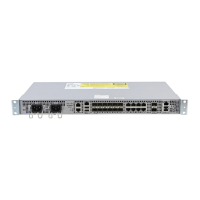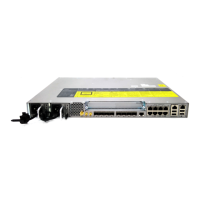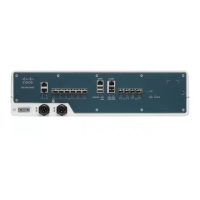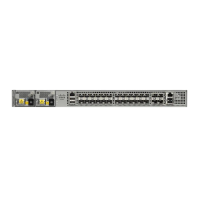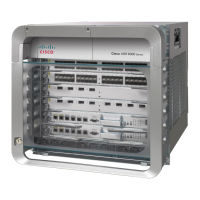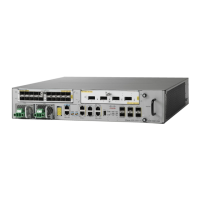that do not use the standard 0x8100 ethertype to identify 802.1Q-tagged frames. For instance, if 0x9100
ethertype is used as the custom dot1q ethertype on a particular port, incoming frames containing the ethertype
are assigned to the VLAN contained in the tag, immediately following the ethertype. Frames that arrive on
that same port containing ethertypes other than 0x9100 are forwarded to service instance with default
encapsulation, if present..
The interface can be configured with the following ethertypes:
•
0x9100
•
0x9200
Restrictions for Custom Ethertypes
•
If a custom ethertype is configured under a physical port, all tagged service instances under the physical
port are forced to use that particular ethertype.
•
Rewrite push is not supported on untagged EFP when custom ethertypes are used.
•
Custom ethertype is not supported on IP configured interfaces.
•
Custom ethertype config 0x88a8 is not supported. Only 0x9100 and 0x9200 are supported.
•
dot1q tunneling ethertype command is not supported on a dot1ad port.
Configuration Example
interface GigabitEthernet 0/1
dot1q tunneling ethertype [0x9100 | 0x9200]
service instance 1 ethernet
encapsulation dot1q vlan 1 [second-dot1q vlan 2]
rewrite ingress tag pop 1 symmetric
Bridge Domains
A service instance must be attached to a bridge domain. Flooding and communication behavior of a bridge
domain is similar to that of a VLAN domain. Bridge-domain membership is determined by which service
instances have joined it, while VLAN domain membership is determined by the VLAN tag in the packet.
You must configure encapsulation before you can configure the bridge domain.Note
Use the bridge-domain bridge-id service-instance configuration mode command to bind the EFP to a bridge
domain instance. The bridge-id is the identifier for the bridge domain instance, an integer from 1 to 4000.
Split-Horizon
The split-horizon feature allows service instances in a bridge domain to join groups. Service instances in the
same bridge domain and split-horizon group cannot forward data between each other, but can forward data
between other service instances that are in the same bridge domain, but not in the same split-horizon group.
Service instances do not have to be in a split-horizon group. If a service instance does not belong to a group,
it can send and receive from all ports within the bridge domain. A service instance cannot join more than one
split-horizon group.
Carrier Ethernet Configuration Guide (Cisco ASR 920 Series)
18
Ethernet Virtual Connections Configuration
Bridge Domains

